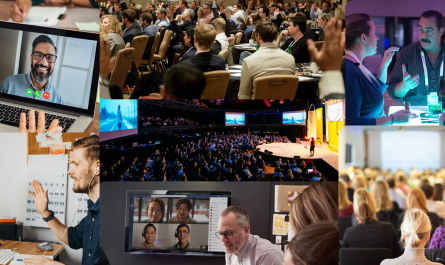Understanding life at home: How IKEA uses a visual platform called Open Home
- Introducing home visits at IKEA: History and future
- Combining research performed by professionals and co-workers on the same platform
- Identifying challenges when building a global platform
Terje Nilstun, Consumer Insight Specialist & Eva-Carin Banka Johnson, Project Manager, Ikea
You can find all Qual360 conference recordings for free in our video section!
Video transcript below (This is an AI generated summary. There may be inaccuracies.)
Home visits since the 1970s
The presenters, Eva-Carin Banka Johnson and Terje Nilstun reflect on the long history of Ikea visiting people’s homes, starting with their founder in the 70s. Home visits are used to better understand customers, develop products and ranges, support strategic initiatives, and even local retailers are mandated to do a minimum of 20 home visits a year. Ikea believes that home visits are a fantastic opportunity to truly understand consumers and establish emotional connections. While physical home visits are the norm, the pandemic forced Ikea to pilot virtual home visits as well. Eva-Carin and Terje emphasize the importance of bringing the reality and stories from home visits back to the organization to enhance communication and development. They also highlight how observing activities, like working from the bedroom or using kitchens, helps Ikea improve their offerings.
The speakers ask the audience to identify pictures from countries around the world to highlight the cultural differences in homes. They explain that homes in the middle-class tend to be more similar regardless of cultural differences, while homes of those with less money show more differences. The team emphasizes the importance of understanding different contexts when creating products and mentions the challenge of developing solutions for the many people. They also mention the issue of shoe clutter and how it presents an opportunity for Ikea to create a global solution. Eva-Carin and Terje emphasize the value of home visits in improving market relevancy and understanding how to design and communicate products effectively. They also mention that Ikea has a global range of products sold in different countries with a few exceptions.
Introducing Ikea’s Open Home platform
The duo introduces a platform called Open Home, which allows Ikea employees to share and explore home visit data and insights. They explain that this platform started as a collaboration with Gapminder to create a tool similar to Dollar Street, where people can see how others around the world live. It enables employees to filter and search for home visit information based on location, income, living situation, and more. They emphasize the importance of gathering interesting life-at-home stories to inspire the development of relevant solutions. The platform also facilitates the sharing of family information with coworkers, encouraging collaboration and idea generation.
Open Home, consists of three parts: the web, the admin tool, and the connect part. Terje explains that in the past, home visits were conducted differently by different markets, which resulted in a lack of control and legal compliance. However, with the platform, there is now one common place for home visits, ensuring control and legal compliance. He also mentions the challenge of dealing with different legal entities within Ikea. The process of home visits involves setting up a project, recruiting families, obtaining consent and basic data online, and then preparing for the visit. Eva-Carin and Terje emphasize the importance of capturing stories and emotional connections during the visits. Once the data is collected, it is anonymized and published on the platform, accompanied by visually appealing pictures.
Using data from home visits to understand customers’ preferences and needs
Ikea is using data from home visits to understand customers’ preferences and needs. The presenters explain that by clicking on a button, users can virtually explore the homes of different families and see comments from Ikea’s visiting team. They also mention that they have a set of questions, including asking about favorite spots, frustrations, most loved items, and dreams for the home. The team talks about their plan to expand open home visits to all markets and analyze the vast amount of data they collect. They mention the challenge of analyzing the data and express interest in hearing suggestions. The goal is to use this platform for various types of research and ultimately contribute to creating a better everyday life for many people.
Employees at Ikea are encouraged to visit homes and take pictures as part of their research. Eva and Terje note that Ikea has a strong culture and many employees are genuinely interested in contributing to improving everyday life. They sometimes participate in home visits and even have meals with the respondents to observe how they interact with Ikea products. When asked about the impact of social media on their research, they mention that they primarily use consumer-generated photos and do not collect data from social media directly. Lastly, the pair addresses how they navigate the challenge of seeing real-life environments during home visits, acknowledging that some people do tidy up but mentioning that clutter is actually a major issue in many homes that Ikea aims to help solve.









 by
by 


